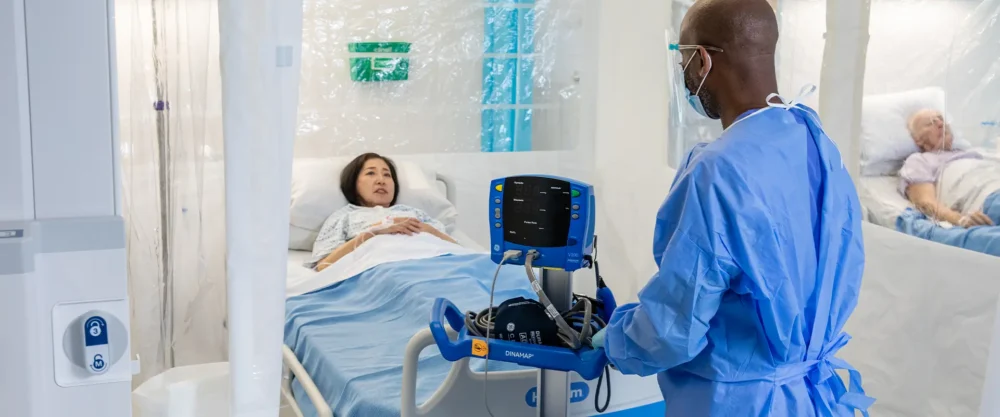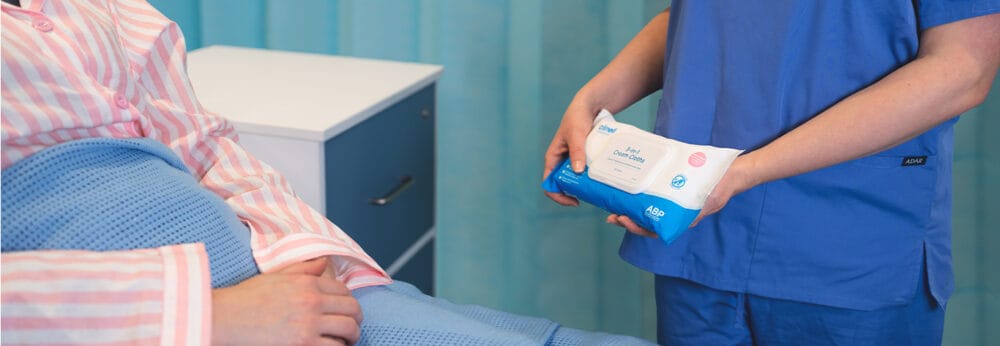Posted
9th October 2023
Research
Infection prevention and control is complex and incorporates a whole range of measures to keep patients, residents, staff and visitors safe when entering a healthcare facility.
These measures are inclusive of improved hand hygiene, surveillance, environmental cleaning, antimicrobial stewardship, personal protective equipment (PPE) and isolation of patients that may pose a higher risk.
Patient isolation relies on the ability of facilities to access single rooms for high-risk patients in the attempt to reduce the transmission of infectious agents or disease by limiting exposure to droplets and airborne particles and reducing contact with other people and the environment.
In many Australian facilities, this is dependent on the availability of single rooms, or isolation rooms, and many older facilities do not have an adequate number of single rooms available to allocate patients. One study highlighted that single room occupancy did not fall below 99.4% indicating demand remains high for single patient rooms[1].
The inability to access these rooms can impact patient flow from Emergency Departments, leading to congestion and “bed blocking” when rooms cannot be found for newly admitted patients. Secondly, studies have shown that increasing the proportion of single rooms can reduce the rate of Healthcare-Associated Infections (HAI)[2].
Temporary pop-up isolation rooms may provide a solution for healthcare facilities to help manage patient flow and infection prevention, by enabling them to rapidly flex isolation capacity to meet demand. Balancing clinical and patient priorities to manage droplet and contact precautions, they can help free up existing permanent isolation rooms for priority patients. A recent Australian study showed there is some evidence to suggest adoption of such a room can be a cost-effective solution if implemented[3].

For further information, we invite you to explore our campaign, IPC ‘Moments that Matter’, where you can find valuable resources. Find out more here >
References
Bloomer, MJ, Lee, SF, Lewis, DP, Biro, MA & Moss, C 2016, ‘Single-room usage patterns and allocation decision-making in an Australian public hospital: a sequential exploratory study’, Journal of Clinical Nursing, vol. 25, no. 15-16, pp. 2200–2210.
Stiller, A, Salm, F, Bischoff, P & Gastmeier, P 2016, ‘Relationship between hospital ward design and healthcare-associated infection rates: a systematic review and meta-analysis’, Antimicrobial Resistance & Infection Control, vol. 5, no. 1.
Graves, N, Kiernan, M & Mitchell, BG 2022, ‘A cost-effectiveness model for a decision to adopt temporary single-patient rooms to reduce risks of healthcare-associated infection in the Australian public healthcare system’, Infection, Disease & Health, vol. 27, no. 3.
SHARE THIS ARTICLE
Tags
Latest News
Advancing Continence Care with Clinell Contiplan: Expanded Indications, Pathways and Proven Outcomes
This World Continence Week, Clinell Contiplan 3-in-1 Cream Cloths introduce…
Celebrating 20 Years of GAMA Healthcare: Our Story
This month, GAMA Healthcare celebrates 20 years of helping prevent…
Norovirus and gastroenteritis outbreaks, the party ‘pooper’ you don’t want invited!
Recently, on 11 October 2024, NSW Health issued a health…
Clean Between to Reduce Healthcare-Associated Infections
Healthcare-associated infections (HAIs) are a significant concern for healthcare facilities…



